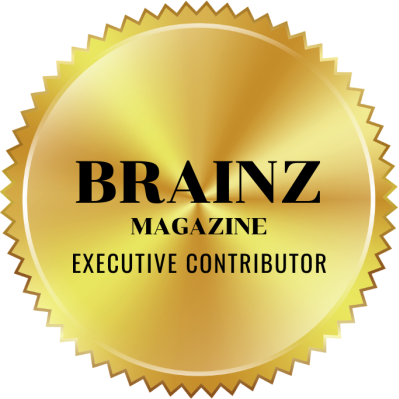
by Julia Felton | Oct 28, 2012
‘Before you are a leader success is all about growing yourself.
When you become a leader, success is all about growing others.’ Jack Welch
A recent survey conducted by Emergentics International revealed that Leadership development is the number one priority of HR and organizational development leaders, with 25% of respondents putting it at the top of their priority list. With organizations needing to meet ever-higher financial goals and growth targets, the emphasis on people development provides a window into the way companies are seeing their ability to rise to the top.
The emphasis on talent development and management over competencies like innovation and tactical elements like metrics points to a realization that positive advancements in organizations must start with people. The second highest response for organizational priority was employee engagement, at 22%.
So what is leadership? The Oxford Paperback Dictionary defines a leader as ‘one whose example is followed’. Leadership is that elusive quality that companies are looking for and yet, in my opinion, is so often lacking in organisations. Given the multitude of companies offering leadership training and the circa £3billion spent on external training annually in the UK, how come our companies are not some of the best performing in the world? To my mind, leadership and management are too often confused. We expect managers to lead and yet leadership and management involve completely different skill sets. Indeed, the Peter Principal invariably plays out in organisations. The Peter Principal states that ‘people are promoted to the level of their incompetency’. This is why all too often people get promoted only to fail in their managerial role because what they really need are leadership skills.
Complete leadership starts with the vision and builds relationships with the people that share the vision and who will take on the task of achieving the vision. This differs from management which uses structures, rules and processes in order to control and predict results in a more stable situation. Frank S. Greene notes that ‘the success of management is seen in the industrial empires where people can be used interchangeably and as replaceable parts.’
In order for any business to be successful it needs strong leaders and particularly so in this age of globalisation because whilst an individual might be able to mask their lack of leadership skills in a small organisation, in my experience once they have to manage across multiple locations they will be found out. Great leadership involves developing a blend of vision, relationships and execution and as an organisation expands, the need for the leader to communicate that shared vision to a diverse set of people becomes paramount because unless the vision is shared, the organisation will never meet its goals. It will become like a ship bobbing up and down on the ocean with no clear direction of where it is heading and wonder why the business fails to move forwards.
So how can Horse Assisted Coaching help people develop leadership skills? The answer lies in the fact that horses are always looking for a leader. As a prey animal, the horse always has to be aware of imminent danger or else he could end up as someone else’s lunch. This means that a horse always has to be alert to any danger in his surroundings and also be in a position to run away should that danger present itself. To ensure that the horse can survive being a prey animal it has evolved so that its natural behaviour and physiology can keep it as protected as possible. This is why horses have eyes on the side of their head, as it gives them nearly 360 degree vision to see any approaching danger. They are also acutely aware of any changes in their environment, as this could herald the onset of approaching danger. The sense of community and camaraderie they gain from living in herds also helps keep horses safe. I’m sure you’ve heard of the idiom ‘Safety in numbers’ – well, this is the premise that horses work from. The more of them that are together, the more eyes they have looking out for danger and so the safer they feel.
It is because of this desire to stay safe that a horse is always looking for a leader. Can you imagine living by yourself, never being able to rest and relax for fear of being attacked and eaten? This is a tiring place to be and the reason why a horse is willing to let us take up the leadership role with them. However, and this is a really big thing, we must prove to be a leader who can be trusted and who knows what they are doing. If we have no clarity or certainty and don’t evoke a sense of trust from the horse then he will not let us lead him and he will take over the leadership position. You see, unlike people who might be quite polite when their boss is not being a clear, decisive leader, a horse has no option but to act, his life depends on it, whereas in a business we continue to tolerate poor leadership until such time that the leader is removed from that position – ironically often promoted to another position.
Different from humans, horses don’t follow blindly, yet they are looking to be led. They cannot be coerced or influenced, they choose to follow. Horses have survived for thousands of years due to their ability to get along with, and depend upon, one another. They test each other to establish their position within the herd, deferring only to other horses they feel will keep them safe. In a world in which money, control and status are non-existent, horse leaders respond immediately to the thoughts, feelings and sometimes hidden agendas of those around them, and communicate with authority, purpose, authenticity and confidence – all without ‘saying’ a single word. Like some employees, horses can either be willing participants or resentful ‘herd members’, making them ideal partners for teaching self-leadership and teamwork.
Want to learn more about how horses can help you make systemic leadership changes in your organisation, then check out AHA! Programmes at www.unbridledsuccess.co.uk

by Julia Felton | Sep 4, 2012
Today I am sharing what one of my amazing clients Carly Hope, the Sales Angel wrote about her experience with Horse Assisted Leadership Transformation on Sunday at one of my Success Unbridled Retreats.
“At the start of this year a horse and business whisperer signed up for a coaching call with me. At the time, I didn’t know how or why she and her horses would be part of my life but I knew for certain that they would be. Yesterday I took my VIP group to spend the day with Julia Felton and her wonderful herd of horses and it was truly life changing.
On arrival in the depth of the Sussex countryside, my sat nav said “you have arrived at your destination”and in that very second a large and impressive hawk swooped down and hovered above my car. I later googled “symbolism of the hawk”and the list read
- Attention
- Vision
- Power
- Energy
- Leadership
- Intensity
This is no coincidence as we experienced these things in abundance over this special weekend.
On Saturday evening I set out to meet the herd for the first time. As I walked into their field, I tried to regulate my breath and energy to match the magical stillness in the air and it took a while. When you get on the level with these amazing animals the results are powerful (beyond any spa day) there was an awareness available that I have never before experienced…one that isn’t freely available in this busy life we lead.
I can’t help but find amusement in humans, busying ourselves with ipads and shopping, spending our time immersed in social media…..and yet I have never felt better than sitting still in a field with these clever animals watching the herd chew grass.
I realised in that moment that we have so much to learn from these beautiful horses.
The next day we greeted my VIP clients and my friend Allison Marlowe and the fun started. We spent the day immersed in deep learning, never about the horses and always about ourselves. The horses gently nudge us into alignment, so that our actions meet our heart and our thoughts. They teach us to be in the moment, to enjoy the simple things and as one of my clients beautifully observed to just let go and have a big poo.
As I drove home on the evening the M25 was filled with Olympic traffic but the sun was setting in the distance and I didn’t see the traffic. I didn’t feel like I was in the same body that had made the journey the previous morning.
I almost hesitated to write this note, it is hard to put into words how emotionally beautiful it was to be with the horses, how healing their field is, and how I have learned more about my next steps in life then I could from a traditional classroom.
I know in my role as a sales trainer that whole body learning is essential – that the masculine principles of “how” to do things don’t always work in isolation. That to be truly successful we must address the feeling behind our actions. I believe the horses give us the opportunity to get close to our truth and move forward. The divine feminine is the gift of gentle yet powerful leadership, I am committed to seeking mentors who embody the principles and inspire me..
I just didn’t know she would be a pony!”
One of the most profound things that this amazing about this group of successful women entrepreneurs discovered during the day was the power of teamwork. Accustomed often to working alone the team exercises they undertook with the horses really drew the group together and everyone began to realise the power of collaboration. We even uncovered the Talent Dynamics profile of each person and based with this knowledge everyone could figure out how best they could add value to the team during the exercises with horses. It was amazing to watch.
I will be running days with the horses in September around the theme of what horses can teach us about authentic sales, along with Carly Hope do if this speaks to you let me know and we will send you more details.
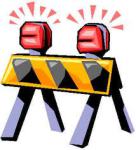
by Julia Felton | Jan 27, 2012
Recently I read a great blog by John Williams of Screw Work, Let’s Play in which he advocated that if we still have not implemented the ideas that we have right now it is because there is some barrier or obstacle in our way. Now we may not be consciously aware of what that obstacle is but rest assured it is there because if it wasn’t you would have already executed the idea. What I found fascinating was that John reminded me of the fact that none of us has a truly unique idea. There are 7 billion people on this planet and the chances that your idea has never flitted across the mind of any one of those people are pretty low. What is important is our attitude and willingness to change our original idea to make it work so that we can get round the barrier that is blocking our way.
Don’t believe that it is just you that encounters barriers. Most successful people come across barriers to their success everyday, but it is how they deal with these barriers and set backs that distinguishes them from the rest. For example when Anita Roddick opened the first Body Shop in Brighton in 1976, two neighbouring funeral parlors initially objected to the shop’s name. Rather than give up on her distinctive brand name or go hunting for new premises, Roddick fought back by suggesting to a local newspaper that she was a woman entrepreneur under siege. The publicity ended up generating traffic to the store and helped her on her first step towards the global success she later attained.
The challenge of how we react to barriers and obstacles in our life was beautifully illustrated to me last weekend by my ponies Bracken and Thistle. We were leading them out on a walk through the countryside when suddenly we across a really muddy stretch. The track narrowed and there was a ditch in front of us that was thick with mud and water. The challenge was how to get across. As I gingerly made my own way round the edge of the mud puddle I just knew that Bracken would follow me across. Partly because she trusts me implicitly but also because she has such gusto. She takes on anything head on, almost never thinking about the consequences of her action. This is an admirable trait so I was not surprised when she leapt to the other side of the ditch over the muddy puddle.
Thistle however had other ideas. She is much more cautious and likes to examine everything before proceeding. In fact Thistle’s solution to the problem was to just plant her feet and refuse to move. She was not prepared to make the leap. For her the ditch was an insurmountable barrier that could not be crossed and as such she was stuck in her tracks. I waited for about ten minutes and despite offering Thistle some gentle persuasion nothing was going to make her move, she was stuck. Paralysed by the fear of moving forward. For me her action so beautifully reflected that I often experience in my own life. A fear of moving forward means that I can get stuck when I come across problems obstacles and barriers in my business.
So what was the solution? Well, Thistle and I went and found another route to get across the ditch, one that was not so muddy and that she could cope with. Would she has found that route by herself, probably not, which is why we need mentors and business coaches to help us find the way round obstacles when they come up in our own lives. There is always a solution to everything it is just that often we can’t see the wood for the trees.
So next time you come across a barrier or obstacle in your life you can either leap across it like Bracken, stay stuck like Thistle did initially or seek out support to help you find another way just Thistle finally did. What will you do to get through the inevitable barriers that will show up in your life or business?. Post your comments below to let me know.

by Julia Felton | Dec 25, 2011
It never ceases to amaze me the lessons my horses teach me about life, and today, Christmas Day, is no exception. My friend Maria and I decided to take my two horses Toby and Charlie for a walk in the woods along with her dog Zac. We were just leading the horses on foot due to the icy ground conditions. Maybe it was the exuberant energy of Zac or the bell on the end of my Xmas hat that kept ringing but the horse’s energy was really high which for my two boys is pretty unusual.
Often when we lead them out on foot (as we do quite often) it is a case of trying to encourage the horses to move forward. Today, they were no a mission, and there was no stopping them. As we entered one of the large fields Charlie’ s energy rose even more as he connected to his racing instincts and thought momentarily about racing off. When you have half a ton of horse on the end of a rope your instincts are to keep the rope short so that you can control the horse. What are we deluding ourselves to?. There is no way – me weighing some 63kg has any chance of controlling that half ton of weight. If he wants to run that is exactly what he will do and nothing will stop him. And yet, when I had faith and actually loosened my grip on the rope and made it slack, thereby letting go of the control, Charlie’s energy dropped and he slowed down.
This made me think about how often in my own life, especially when life seems like it is spiralling out of control, that holding on tightly is just about the worst thing that you can do. Surrender to what is happening around you and let go and often the most unexpected outcomes arise. Did I think that by loosening my grip on Charlie’s rope that he would slow down?. No not really, but I had faith and just by letting go of the outcome and yielding control to something greater an amazing result happened.
I am reminded too of all the times in my corporate life when often I micro-managed my team. My need to be in control to ensure the correct outcome was so strong that I never allowed my team members to “race off”. How different the outcome might had been had I given them that power and loosened my control over them. Interesting food for thought on this Christmas Day.
So as we enjoy the Holidays take time to think about your own life and what might be achieved if you have the courage to let go.
Seasons Greetings to Everyone
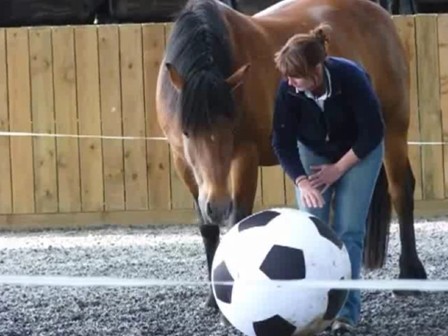
by Julia Felton | Sep 28, 2011
Although Horse Assisted Coaching is a relatively new learning modality it is a form of action based or experiential learning, which is certainly not new. The earliest beginnings of experiential learning are rooted in programs like Project Adventure and Outward Bound. Corporations around the world adopted outdoor experiential learning as evidenced by a famous segment in the 1990′s sitcom Murphy Brown. Its use began to diminish, as other popular concepts replaced them, from the emotional intelligence movement to strengths-based leadership. But like the timeless needs that corporations have for personal commitment, team collaboration and innovative risk-taking, experiential learning continues to thrive.
Tim Buividas of the Corporate Learning Institute (CLI) defines experiential learning as “activities that include any active learning experience which offers a chance to learn from failure, success and everything in between. It has to include the possibility of transferring learning back to the workplace. Examples of active learning or experiential learning activities include ropes courses, problem solving games, and many indoor events. Any indoor active learning session includes a learning cycle. For an experiential session to be effective, participants have to experience, review, discuss, and apply their experiences”, Buividas concluded.
Can experiential activities help your individual contributors, teams and leaders develop collaboration and problem solving skills? I absolutely believe that participating in a horse assisted coaching session will bring untold benefits to any organisation. In my experience team members leave more focused and committed having had in many cases true insights into what is happening both in their personal and professional life. These AHA (Accelerated Horse Awareness) moments cause a quantum shift in people allowing them to see things with a new perspective. Oftentimes a greater appreciation of the challenges faced by co-workers is observed resulting in a more collaberative environment when team members return to work.
Trust is one of the major new commodities of the environment we live in and horses are great at helping individuals develop this essential life skill. Let’s face it if we don’t trust the people we work with then we won’t achieve much and all our energy will be taken up focusing on negative things and protecting our position. How much more effective can an organisation can be when everyone trusts each other?
So if you are looking for a new innovative way to bring a different perspective to your leadership and team building trainings then please consider Horse Assisted Coaching. Its really effective, fun and the ROI is significant. Horse Assisted Coaching might not yet be in the mainstream of learning and development but it should be because in my experience most of the current offerings are not delivering on their promises and as Einstein said: “The definition of insanity is doing the same thing time and time again and expecting different results”. So come on, try it and see what benefits your organisation can get, I’m sure you will be pleasantly surprised.

by Julia Felton | Aug 12, 2011
The picadero – much like a round pen with corners – is a place where we can explore our own truths and look in the mirror of how we relate to others. With our equine partner, we have the opportunity to experience the impact of our presence – our emotions and energy – on others. This experience can be a very powerful metaphor, as was the case with “Susan,” a participant in one of the corporate HorseSense programs we facilitated recently.
Susan is the Office Manager for an executive search firm in the northeastern United States. She had never been around horses before our program, and seemed to be enjoying her interactions with them very much. Still, she entered the picadero with some trepidation, gripping the flag tightly in her left hand, unsure of how to proceed with Chip, a large Appaloosa gelding who was a veteran of a number of our programs. Susan approached Chip in an attempt to establish a connection with him. Dropping the flag to the ground between her own and Chip’s front feet, she held out her hand in silent gesture of “hello”. Chip expressed mild interest in the flag, nosing it lightly, and ignored Susan.
We watched as Susan tried more affirmatively to connect with Chip, moving closer to him, tentatively stroking his neck with her right hand, holding the flag aloft in her left hand near Chip’s head, and occasionally shaking it. When these gestures produced no obvious connection, Susan began to wave the flag at Chip’s left haunch, then his shoulder, then his haunch again – trying to get him to move. Chip stood perfectly still.
Susan’s efforts became increasingly disjointed and remained without effect. It was painful to watch her frustration visibly mounting. After a very long few minutes of being ignored, Susan turned away from Chip looking dejected. She lowered the flag, lowered her head and said, “I just don’t know what to do.”
Nikki joined Susan in the picadero and asked her a few questions. “What would you like Chip to do?” “How would you describe what you’ve tried so far?” “What else might you try?” With a few words of encouragement about the importance of setting your intention and concentrating on being clear when asking for what you want, Nikki stepped out of the arena and left Susan to continue.
Susan seemed to draw inward and we all watched in silence. Then she took a step back from Chip and snapped the flag energetically behind him. Chip raised his head and shuffled forward a few steps. Encouraged, Susan repeated the vigorous snap of the flag. Once again, Chip responded by moving forward a few more steps. Then the dance began in earnest. With each step that Chip took, with each snap of the flag, we could see Susan’s confidence grow until both horse and human were trotting easily around the picadero together. Susan was grinning from ear to ear, carrying herself lightly and openly, radiating excitement and energy.
After a minute or so, Susan stopped trotting, lowered the flag and, having accomplished her objective, moved to leave the picadero, not noticing Chip following behind her like her newest best friend. We motioned to her to turn and look, and then asked her to stand by Chip for a picture of the two of them together.
Once the picture was taken, Susan left the picadero and walked past the group, clearly moved by her experience. Without speaking, Leslie placed a hand on Susan’s shoulder, and Susan started to sob. Leslie asked, “Do you want to talk about what’s coming up for you?” Susan nodded and explained that her experience with Chip mirrored her experience in the office with staff. “I don’t want to hurt anyone’s feelings at work, just as I didn’t want to push Chip with the flag. But they don’t pay attention to what I’m asking for, and I end up feeling frustrated. I see now that I’m so concerned about being nice and getting along with everyone that I don’t really ask for what I want. I don’t want to hurt their feelings, but I end up feeling hurt because I’ve been unclear and they don’t respond.”
Leslie asked, “How did Chip respond to your clarity?” Susan answered, “It was great. Everything flowed so easily after that. We had a great time! This was a huge lesson for me in asking clearly for what I want.”
Not every picadero experience is so profoundly insightful, but the opportunity is there for those who are willing to engage with what they see when they look in the mirror of their equine partner’s eyes.
Article contributed by Nikki and Leslie Kagan, Israel/USA, Fellow HorseDream Professionals
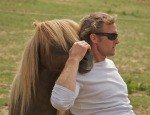
by Julia Felton | Jul 21, 2011
The horse is the teacher, Louis Wood insists. A real-life cowboy schooled in natural horsemanship (often described as “horse whispering”), Wood takes time away from running his 300-acre ranch in Virginia not only to train horses, but also to help horses train human beings.
Wood’s method of working with a young or difficult horse (though difficult is a misnomer to him; he says it’s often the riders who need the most reaching) is miles away from the traditional method of horse breaking. Instead of trying to dominate a horse, bending its will to his own as in the traditional method, Wood listens and communicates with the animal using body language, establishes trust, partners rather than tries to control, and teaches what the horse is ready to learn.
It is this unusual interplay between man and animal that John Lord, director of the Leadership Development Center at the University of Virginia, wants his students to learn from. The goal of the Horse Sense for Leaders program, built around observation of Wood’s equine training sessions, is not to imitate the cowboy’s individual techniques. Rather, Lord asks participants to observe Wood’s work and listen to his running monologue to generate questions about their own leadership styles and gain new insights.
Watching Wood work real-time with the horses provides an immediacy that role playing can’t, Lord says. Observers can see effective leadership in action and its results minute by minute.
After two days of watching Wood work with the horses, participants brainstorm what they’ve learned with Lord and co-facilitator Tara Telfair. Questions the observers explore include how Wood defines the relationship with the horse and sets expectations, how he communicates, how he motivates, and how he defines success.
Each person will come away with a different set of lessons, Lord asserts. In his own experience of watching Wood, Lord says he didn’t learn something new about leadership so much as gain insights about what he already knew.
The goal is for participants to see their relationships with others through fresh eyes. “If you leave here with something on your mind that’s bothering you,” Lord says, “then we will have succeeded.”
COPYRIGHT 2003 American Society for Training & Development, Inc.
COPYRIGHT 2008 Gale, Cengage Learning
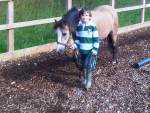
by Julia Felton | Jul 13, 2011
There is so much that horses can teach us about life. Horses have been described as “authenticity meters” and in my experience this is so true. They see beyond the mask that we put on and through to the real core of the person. They know when someone is frightened or in need of support, and when someone is overly aggressive. Horses allow, and expect us, to be who we truly are. They will not tolerate the mask that humans so often feel forced to put on in order to protect themselves.
I am reminded of an experience with a young lad, we shall call him Tom. Tom had been excluded from school for his aggressive behaviour. The teachers described him as being out of control and he bullied the other children. It took only a few sessions with a horse for Tom to realise that in order to connect with a horse he needed to let go of this mask. He needed to expose the young, frightened lad beneath and know that everything would be alright. Tom learnt it was ok to show his emotions and soon realised that acting tough had not been serving him well.
Horses act as mirrors reflecting back to us what we otherwise choose not to see. We all understand that we have different perspectives on the world and see the same thing in different ways, yet ironically we can only see what we already have in our frame of reference. If we experience the horse as angry and aggressive, it is likely that there are similar emotions that we have running through our lives. Horses allow us the opportunity to experience firsthand what is happening to us and by providing immediate feedback they allow us to change our actions to get a different result. How often does that happen in life? And importantly horses are non-judgemental. They just respond to the energy and intent shown to them. For children, I have found that often when faced with a horse the child’s whole persona can change as the real child that has been hiding behind that conditioned mask emerges. This can be a joyous experience for both children and parents. AHA! Moments occur and the children, and parents, get some real insights into what is happening for them.
So why is Horse Assisted Coaching so powerful? Well the answer lies in the fact that many traditional programmes focus on a verbal, classroom (neo-cortex) approach. Whilst this clearly has a role in society I have found that Horse Assisted Coaching sessions achieve a deeper, more sustainable and faster impact on creating change. This is achieved by doing, what is known as limbic learning, therefore there is no integration required. Examples of limbic learning are riding a bike, learning to walk etc. Once we have learnt to do these we do not forget.
Typically no riding is involved in a Horse Assisted Coaching session. Generally, all the work is done on the ground with the participants leading the horses through a series of exercises that help give them insight into such diverse topics as:
- The importance of being a great leader. If you can’t lead a horse and get him to follow you, how can you expect a team to follow you? Importantly, how can you lead others if you can’t lead yourself
- How body language and voice tonality help you influence others. With no words participants need to influence the horse to move using their own resources and what state you are in definitely influences the outcome.
- Value of teamwork. In this ever-connected society there is a real need for being plugged into the system in order to succeed. Alliances and partnerships will become more commonplace so participants learn how to contribute to a team and work towards a common goal.
- The importance of focus and intent because if you are not clearly focused and know what you are doing then horse will not follow you.
Sessions can be run in a group format or one on one depending on the client’s requirements. Horses can also be used to develop family constellations and these in the past have been shown to be very powerful.
So if you are looking for a fun, innovative way to have a break through with your clients then please do not hesitate to contact me. connect@connect-thru-horses.com
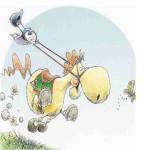
by Julia Felton | Jun 20, 2011
This week’s blog is inspired by Mark Fritz and his weekly quotes in leadership. Recently Mark stated:
“Leadership is influence, and the consistency of our behaviours is what keeps our influence with others high. However, the hardest person to influence is ourselves, as we often ask ourselves “Why am I not able to do it?”. Successful leaders understand that the foundation of their success is built by leading themselves first”.
This statement really made me think as I resonated with it so much. Horses are always looking for a leader to take care of them. Let’s face it being a leader is tough, and few want to do it when others are willing to assume that mantel. However, what is really interesting is that whilst a horse is happy to be a follower he will only remain in that role if he knows the leader is competent and making sound decisions. The minute the leader demonstrates poor decision making and acts in an indecisive way, the horse is forced to take over the leadership role in order to keep himself safe.
This has so many implications for organisations as unlike my horses, employees in organisations cannot assume the leadership role if their boss lacks leadership style. Rather they are forced to stay and keep on operating in the same way, despite the fact they are aware of serious leadership flaws. This made me wonder how those employees feel. I suspect they lack trust in their leader and in fact often get disheartened believing that they could do a better job. How demoralising and demotivating that must be.
The Peter Principle states that:
“We are promoted to our level of incompetence”
So given this fact there must be an awful lot of leaders in business today that are not really happy in that role. In my opinion these “uncomfortable” leaders often lack the charisma and ability to earn respect and instil trust in their teams. What a tragedy this is and for what it is worth in my view many of these people lack these essential management skills as they can’t apply them to their own lives. In my observations of successful leaders these are the ones that have a real focus, desire and passion. They know what they want in their lives and this drive is infectious. It rallies people to support them and as such their tribe grows and grows. They lead by example with passion and committment. They understand that real leaders can’t lead others until they can lead themselves.
Are you leading yourself, the hardest person, or are you letting life lead you. Leadership is not for the faint-hearted. Step up to the mark and claim your power and get a tribe of people following you. Just like my horses want to follow me.

by Julia Felton | Mar 10, 2011
Last night I attended an amazing Scanners event hosted by John Williams and Selina Barker – if you have never been along I would thoroughly recommend it, especially if like me you have loads of ideas but can’t seem to get started on any. One of the subjects we were discussing was time management. Now you might think this is a boring topic but not the way that John and Selina describe it. If like me the thought of getting started on a new project is so over-whelming that you never start, then Selina gave us this great idea. She called it Micro-Blocking and the premise is that if you clear your diary for 20 mins and just work uninterrupted on that one thing you will be amazed at how much you can achieve. You see, 20 mins is achievable for most of us, and usually it is the getting started that is the problem. So if you think you only have to do the task for 20 mins you are more likely to commit to this – and as we all know some action is better than no action.
One of my challenges however, having put that appointment in the diary with myself is actually keeping it. Just writing this blog is taking me way too long as I am continually being interrupted. Whose fault is that? Selina summed this up well by saying are you being pro-active in managing you life or are you being re-active and just responding to the environment around you. I remember well one of my coaches saying that you create the environment around you. Here I am creating an environment of chaos by being so reactive.
So what does this have to do with Horse Lessons for Life? Well it reminded me of the question on the home page of my Equine Inspired Leadership website “Are you leading your life or is your life leading you?” We all have the ability to be leaders of our lives and yet few of us do. We allow ourselves to become wrapped up in the situation around us, re-acting to everyone elses stuff and not taking control of our own destiny. Horses show us how to be leaders of our own lives and give us feedback on how we are doing. I discussed how they do this in a previous blog.
So for today please let me know whether you are leading your life and being pro-active or is your life leading you as you react to the circumstances surrounding you.













